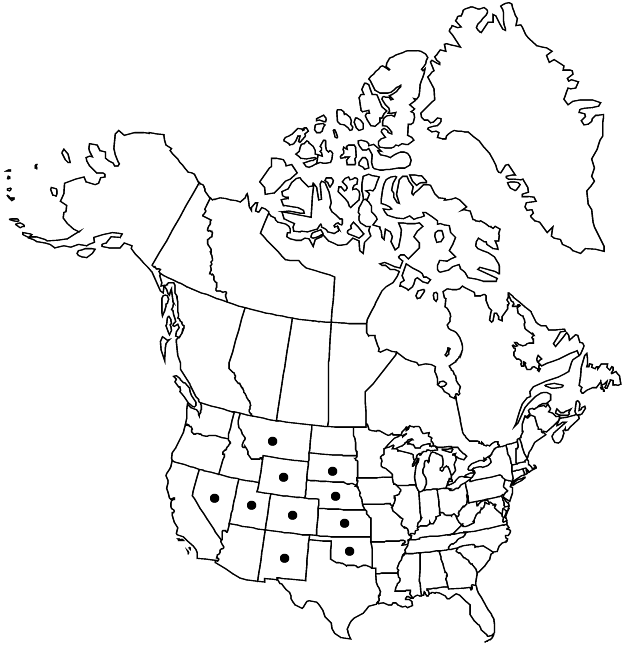familyCaryophyllaceae
subfamilyCaryophyllaceae subfam. Alsinoideae
genusEremogone
speciesEremogone hookeri
Difference between revisions of "Eremogone hookeri var. hookeri"
Synonyms: Arenaria hookeri subsp. desertorum (Maguire) W. A. Weber Arenaria hookeri var. desertorum unknown Eremogone hookeri subsp. desertorum (Maguire) W. A. Weber
FNA>Volume Importer |
FNA>Volume Importer |
||
| Line 7: | Line 7: | ||
|name=Arenaria hookeri subsp. desertorum | |name=Arenaria hookeri subsp. desertorum | ||
|authority=(Maguire) W. A. Weber | |authority=(Maguire) W. A. Weber | ||
| − | }}{{Treatment/ID/Synonym | + | }} {{Treatment/ID/Synonym |
|name=Arenaria hookeri var. desertorum | |name=Arenaria hookeri var. desertorum | ||
|authority=unknown | |authority=unknown | ||
| − | }}{{Treatment/ID/Synonym | + | }} {{Treatment/ID/Synonym |
|name=Eremogone hookeri subsp. desertorum | |name=Eremogone hookeri subsp. desertorum | ||
|authority=(Maguire) W. A. Weber | |authority=(Maguire) W. A. Weber | ||
| Line 28: | Line 28: | ||
|elevation=1200-2900 m | |elevation=1200-2900 m | ||
|distribution=Colo.;Kans.;Mont.;Nebr.;Nev.;N.Mex.;Okla.;S.Dak.;Utah;Wyo. | |distribution=Colo.;Kans.;Mont.;Nebr.;Nev.;N.Mex.;Okla.;S.Dak.;Utah;Wyo. | ||
| − | |discussion=<p>We include the densely pulvinate plants often known as var. desertorum within var. hookeri. R. L. Hartman (1971) analyzed leaf blade length and sepal length, the characters used by B. Maguire (1951) in recognizing three varieties of Eremogone hookeri, and found that variation is continuous between var. hookeri and var. desertorum.</p> | + | |discussion=<p>We include the densely pulvinate plants often known as var. desertorum within <i></i>var.<i> hookeri</i>. R. L. Hartman (1971) analyzed leaf blade length and sepal length, the characters used by B. Maguire (1951) in recognizing three varieties of <i>Eremogone hookeri</i>, and found that variation is continuous between <i></i>var.<i> hookeri</i> and var. desertorum.</p> |
|tables= | |tables= | ||
|references= | |references= | ||
| Line 52: | Line 52: | ||
|publication year= | |publication year= | ||
|special status= | |special status= | ||
| − | |source xml=https://jpend@bitbucket.org/aafc-mbb/fna-data-curation.git/src/ | + | |source xml=https://jpend@bitbucket.org/aafc-mbb/fna-data-curation.git/src/8f726806613d60c220dc4493de13607dd3150896/coarse_grained_fna_xml/V5/V5_139.xml |
|subfamily=Caryophyllaceae subfam. Alsinoideae | |subfamily=Caryophyllaceae subfam. Alsinoideae | ||
|genus=Eremogone | |genus=Eremogone | ||
Revision as of 17:37, 18 September 2019
Basal leaf blades straight or recurved, 0.3–1.5 cm, rigid. Sepals 5–8(–9) mm. 2n = 44.
Phenology: Flowering spring–summer.
Habitat: Plains and exposed slopes and ridges
Elevation: 1200-2900 m
Distribution

Colo., Kans., Mont., Nebr., Nev., N.Mex., Okla., S.Dak., Utah, Wyo.
Discussion
We include the densely pulvinate plants often known as var. desertorum within var. hookeri. R. L. Hartman (1971) analyzed leaf blade length and sepal length, the characters used by B. Maguire (1951) in recognizing three varieties of Eremogone hookeri, and found that variation is continuous between var. hookeri and var. desertorum.
Selected References
None.
Lower Taxa
None.